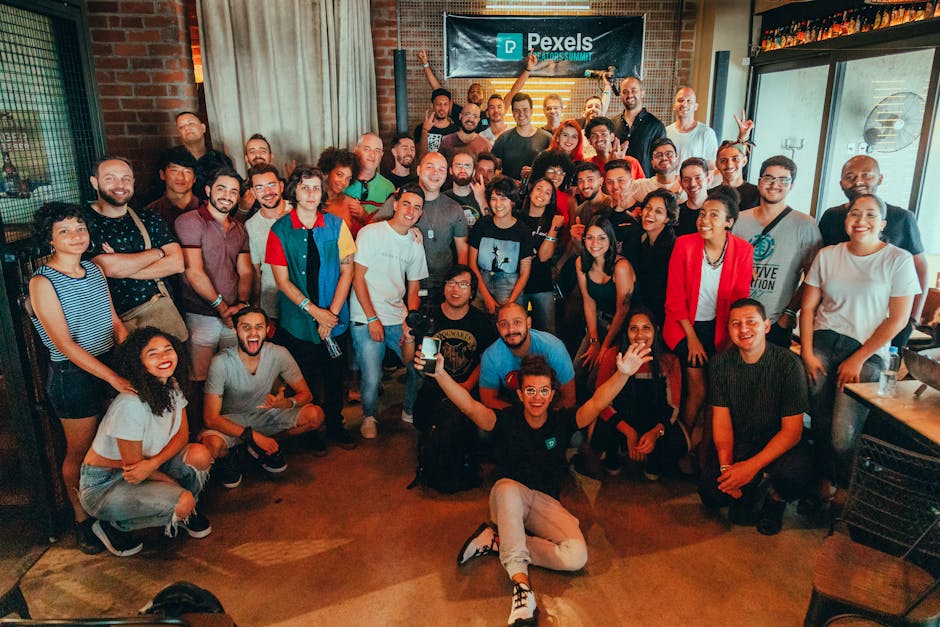In the dynamic world of digital fitness, influencers are constantly seeking innovative ways to connect with their audience and generate sustainable income. One of the most impactful and rapidly growing monetization strategies for fitness influencers revolves around the creation and execution of paid fitness challenges. These structured programs offer a unique blend of engagement, community, and tangible results, making them a cornerstone for building a thriving online fitness business.
This comprehensive guide delves into the specifics of how fitness influencers can harness the power of challenges to maximize their earnings, build a loyal community, and scale their impact. We’ll explore market data, core strategies, emerging trends, and practical applications, providing you with a roadmap to navigate this lucrative niche.
The Thriving Fitness Influencer Market Landscape
The fitness industry is experiencing robust growth, creating fertile ground for influencers to flourish. Understanding the market’s trajectory and the influencer’s role within it is crucial for developing effective monetization strategies fitness professionals can implement. The overall fitness market is valued at a staggering $40.58 billion in 2024 and is projected to grow to $42.81 billion in 2025, reflecting a compound annual growth rate (CAGR) of about 5.6% [3]. This expansion signals a continuous demand for fitness content, guidance, and community.
The Rise of the Fitness Influencer
Fitness influencers are a significant force within the broader influencer marketing landscape. Approximately 15% of all influencers specialize in fitness, carving out a substantial niche [4]. The influencer marketing industry as a whole is valued at about $21.1 billion in 2024, with brands increasingly allocating larger budgets to leverage influencers’ high trust with their audiences [5]. This trust is a powerful asset that fitness influencers can convert into various revenue streams, particularly through engaging and results-driven challenges.
Understanding Influencer Earnings Potential
The earnings of fitness influencers vary widely, influenced by factors such as follower count, engagement rates, and the diversity of their monetization strategies fitness professionals employ. For instance, nano-influencers (1,000–10,000 followers) can earn roughly $150 to $600 per sponsored post, while mid-tier influencers with larger followings can command $1,000 to $20,000+ per post [1][2]. Top fitness influencers, like Simeon Panda, demonstrate the peak potential, generating upwards of $17.5 million annually through diversified streams including paid challenges, brand deals, product endorsements, coaching, and merchandise [2]. This highlights the importance of a multi-faceted approach to monetization.
Why Challenges are a Game-Changer
Paid challenges stand out as a particularly effective monetization strategy fitness influencers can adopt due to their high engagement and conversion rates. They offer scalable content that feels personalized, fostering strong community building and engagement—critical elements for converting participants into high-ticket coaching clients or premium memberships [3]. The intensive nature of challenges builds trust and demonstrates value, making them excellent funnels for more lucrative offers.
| Statistic | Value | Source |
|---|---|---|
| Fitness market size 2024 | $40.58 billion | CommuniPass |
| Projected fitness market size 2025 | $42.81 billion | CommuniPass |
| CAGR for fitness market (2024-2025) | ~5.6% | CommuniPass |
| Percentage of influencers in fitness niche | 15% | Exercise.com |
| Paid challenge completion rate | 70-80% | CommuniPass |
| Sponsored post earnings, nano influencers | $150 – $600 | Hevy Coach |

The Power of Paid Challenges: Engagement & Conversion
Paid fitness challenges are not just another product; they are a strategic imperative for fitness influencers aiming to scale their impact and revenue. They tap into human psychology, leveraging accountability, community, and structured progression to deliver unparalleled engagement. This makes them a superior monetization strategy fitness professionals should prioritize.
Why Paid Challenges Outperform Traditional Courses
The data speaks for itself: paid fitness challenges boast completion rates of 70% to 80%, vastly outperforming the usual 5-10% rates seen in traditional online fitness courses [3]. This roughly 14X higher engagement rate is a testament to their effectiveness. The structured, time-bound nature of challenges, combined with peer support and direct access to the influencer, creates an environment conducive to success.
- Higher Accountability: Participants are more invested when they’ve paid, and the group dynamic fosters a sense of shared responsibility.
- Clear Timelines: Defined start and end dates create urgency and a clear path to completion.
- Tangible Goals: Challenges are typically designed around specific, measurable outcomes, which motivates participants.
- Community Support: Interaction with peers and the influencer provides encouragement and problem-solving.
Challenges as a Funnel for High-Ticket Offers
One of the most powerful aspects of paid challenges is their ability to act as an effective sales funnel. By delivering clear, tangible results and building trust, influencers can convert challenge participants into higher-value clients. This is a key monetization strategy fitness experts use to scale their businesses.
- Build Trust and Credibility: A successful challenge demonstrates the influencer’s expertise and the effectiveness of their methods.
- Showcase Value: Participants experience firsthand the benefits of structured guidance and community.
- Identify Engaged Prospects: Those who complete challenges are highly motivated and more likely to invest in further services.
- Seamless Upselling: Graduates can be offered personalized coaching, premium memberships, or advanced programs.
For example, an influencer might offer a “7-Day Core Strength Challenge” for $29. Upon completion, participants who loved the experience are then offered a 12-week personalized strength training program for $497 or a monthly premium membership for $49. This tiered approach maximizes lifetime customer value.
Case Study: The “Small Wins” Approach
Influencers reportedly see unprecedented engagement by focusing on “small, tangible results” and community building through challenges, which leads to high completion rates and better funneling of participants into high-value personalized services [1]. This strategy emphasizes achievable daily or weekly goals, building momentum and confidence. For instance, a “30-Day Sugar Detox Challenge” might focus on eliminating one sugary item per day, gradually leading to a full detox. The incremental success keeps participants motivated and invested in the influencer’s guidance.

Designing High-Impact Fitness Challenges for Monetization
Creating a successful fitness challenge goes beyond simply outlining workouts. It requires thoughtful planning, a deep understanding of your audience, and a focus on delivering measurable outcomes. This section explores the key elements of designing challenges that not only engage but also effectively serve as a monetization strategy fitness influencers can rely on.
Defining Your Challenge Niche and Goals
Before diving into content creation, identify the specific problem your challenge will solve for a particular audience segment. A niche focus allows for more targeted marketing and higher perceived value. What are the common struggles your audience faces? What specific, achievable results can you promise within a defined timeframe?
- Target Audience: Beginners, advanced athletes, new mothers, busy professionals, etc.
- Specific Goal: Weight loss, muscle gain, improved flexibility, better nutrition habits, stress reduction.
- Duration: Typically 14-21 days, but can range from 7 days to 30 days.
- Measurable Outcomes: X pounds lost, Y inches gained/lost, Z minutes held in a plank, improved energy levels.
For example, instead of a generic “Fitness Challenge,” consider a “14-Day Post-Natal Core Recovery Challenge” or a “21-Day Plant-Based Meal Prep Challenge.” These specific titles immediately resonate with a particular need.
Crafting Engaging Content and Structure
The content of your challenge must be clear, actionable, and progressive. Each day or week should build upon the last, guiding participants toward their goal. Remember, delivering clear, tangible results to participants is critical to building trust and driving conversions to high-ticket offerings [1].
- Daily Workouts: Provide clear instructions, video demonstrations, and modifications for different fitness levels.
- Nutrition Guidance: Offer meal plans, recipes, or dietary guidelines that support the challenge’s goal.
- Educational Content: Include short lessons on exercise form, nutrition principles, or mindset strategies.
- Tracking and Progress: Encourage participants to log their progress (e.g., photos, measurements, workout stats) to visualize their achievements.
- Mindset and Motivation: Incorporate daily affirmations, journaling prompts, or motivational messages.
Integrating Community and Accountability
The community aspect is a major differentiator for challenges compared to standalone digital products. It fosters a sense of belonging and significantly boosts completion rates. Building and nurturing a community is key to this monetization strategy fitness influencers employ.
- Private Group: A dedicated Facebook group, Discord server, or platform-specific community forum.
- Live Q&A Sessions: Regular live interactions with the influencer to answer questions and provide support.
- Peer Support: Encourage participants to interact, share progress, and motivate each other.
- Check-ins: Daily or weekly check-ins from the influencer or designated coaches to maintain accountability.
Pre-Launch and Post-Challenge Strategy
A successful challenge isn’t just about the content; it’s about the entire participant journey. This includes effective marketing before launch and a clear strategy for post-challenge engagement to maximize your monetization strategies fitness potential.
- Teaser Content: Build anticipation with sneak peeks, testimonials, and countdowns.
- Early Bird Offers: Incentivize early sign-ups with discounts or bonus content.
- Clear Call to Action: Make it easy for people to sign up and understand what they’re getting.
- Post-Challenge Upsell: Offer graduates a natural progression to higher-tier services like 1-on-1 coaching or membership programs.
- Testimonials: Collect success stories to use for future marketing efforts.
Popular Challenge Types and Pricing Strategies
The versatility of fitness challenges allows influencers to cater to a wide range of fitness goals and audience segments. Understanding the most effective challenge types and how to price them strategically is crucial for maximizing your monetization strategies fitness business.
Common Fitness Challenge Formats
Challenges can be structured in numerous ways, each designed to achieve specific outcomes. The key is to align the challenge format with your expertise and your audience’s needs.
- Weight Loss Challenges: Focus on diet, exercise, and lifestyle changes to achieve a specific weight goal.
- Example: “30-Day Shred Challenge“
- Suggested Price: $49 – $99
- Strength & Muscle Building Challenges: Emphasize progressive overload, specific workout routines, and protein intake.
- Example: “21-Day Glute Growth Challenge“
- Suggested Price: $39 – $79
- Nutrition & Meal Prep Challenges: Guide participants through healthy eating habits, meal planning, and recipe creation.
- Example: “14-Day Clean Eating Challenge“
- Suggested Price: $59 – $129
- Flexibility & Mobility Challenges: Focus on stretching, yoga, and mobility drills to improve range of motion.
- Example: “7-Day Splits Challenge“
- Suggested Price: $29 – $59
- Mindset & Wellness Challenges: Combine physical activity with mental health practices like meditation, journaling, or stress reduction.
- Example: “28-Day Mind-Body Reset Challenge“
- Suggested Price: $69 – $149
Strategic Pricing for Maximum Impact
Pricing your challenges effectively involves balancing perceived value, market rates, and your overall monetization strategies fitness goals. A common range for paid challenges is typically between $29 and $199, depending on the depth, duration, and level of support offered.
- Value-Based Pricing: Price based on the transformation or outcome participants will achieve, not just the content itself.
- Tiered Pricing: Offer different levels of access (e.g., basic access vs. premium with 1-on-1 check-ins) to cater to various budgets.
- Early Bird Discounts: Create urgency and reward early adopters with a reduced price for a limited time.
- Bundle Offers: Package a challenge with other digital products (e.g., an e-book, resistance bands) for added value.
Factors Influencing Challenge Pricing
Several elements contribute to how you should price your fitness challenges. Consider these factors to ensure your pricing strategy aligns with your brand and market position.
- Influencer’s Authority: More established influencers with proven track records can command higher prices.
- Challenge Duration: Longer, more intensive challenges typically justify a higher price point.
- Level of Support: Challenges with daily check-ins, live calls, and personalized feedback are more valuable.
- Exclusivity: Limited spots or exclusive content can increase perceived value.
- Results Promised: Challenges with highly desirable and achievable results can be priced higher.

Leveraging Platforms for Seamless Challenge Management
The technical aspects of running a fitness challenge can be daunting, from content delivery to payment processing and community management. Fortunately, specialized platforms have emerged to simplify this process, allowing influencers to focus on what they do best: inspiring and guiding their audience. Utilizing the right tools is a critical monetization strategy fitness professionals need to scale efficiently.
The Role of Dedicated Challenge Platforms
Platforms like CommuniPass empower fitness influencers of all levels to easily design and manage paid challenges, removing technical barriers and allowing scalable community engagement [1]. These platforms often provide an all-in-one solution, streamlining the entire challenge lifecycle.
- Content Delivery: Schedule and deliver daily workouts, recipes, and motivational messages automatically.
- Payment Processing: Securely handle registrations and payments, often with integrated e-commerce features.
- Community Features: Built-in forums, chat functions, or integrations with private social groups.
- Progress Tracking: Tools for participants to log workouts, measurements, and photos, and for influencers to monitor engagement.
- Analytics: Insights into participant engagement, completion rates, and revenue generation.
Key Features to Look for in a Platform
When selecting a platform to host your challenges, consider features that will enhance both the participant experience and your operational efficiency. This choice significantly impacts the effectiveness of your monetization strategies fitness business.
- Ease of Use: An intuitive interface for both you and your participants.
- Customization: Ability to brand the challenge with your logo, colors, and messaging.
- Scalability: Can the platform handle a growing number of participants without performance issues?
- Integration: Compatibility with other tools you use (e.g., email marketing, video hosting).
- Support: Reliable customer support in case of technical issues.
For instance, a platform that integrates with popular video hosting services like Vimeo or YouTube for workout demonstrations, and email marketing platforms like Mailchimp or ConvertKit for participant communication, can save significant time and effort.
Benefits of Using a Dedicated Platform
The advantages of using a specialized platform extend beyond mere convenience. They directly contribute to the success and profitability of your fitness challenges.
- Reduced Technical Overhead: No need to build and maintain complex websites or payment systems.
- Improved User Experience: A seamless and professional experience for participants, leading to higher satisfaction.
- Automated Processes: Schedule content, send reminders, and manage registrations automatically, freeing up your time.
- Enhanced Community Engagement: Dedicated features designed to foster interaction and accountability.
- Faster Launch Times: Get your challenges up and running quickly, allowing you to capitalize on trends and audience demand.
Diversifying Revenue: Beyond the Challenge
While paid challenges are a powerful monetization strategy fitness influencers can leverage, a truly resilient and scalable fitness business relies on a diversified income portfolio. An ecosystem approach, moving beyond one-off brand deals, is essential to maximize earnings and long-term stability [3].
Key Monetization Pillars for Fitness Influencers
Successful fitness influencers combine challenges with other revenue streams to create a robust business model. These additional pillars reinforce their brand and provide multiple touchpoints for monetization.
- Sponsored Content: Partnering with brands for sponsored posts, videos, or product reviews.
- Example: Promoting a specific protein powder or fitness apparel line.
- Earnings: Nano-influencers earn $150-$600 per post, top influencers $1,000-$20,000+ [1][2].
- Affiliate Marketing: Earning commissions by promoting products or services through unique links.
- Example: Linking to a specific brand of resistance bands or a healthy meal delivery service.
- Earnings: Varies widely based on commission rates and sales volume.
- Online Coaching: Offering personalized 1-on-1 or group coaching programs.
- Example: A 12-week personalized training and nutrition program.
- Earnings: High-ticket, often ranging from $500 to $5,000+ per client.
- Digital Product Sales: Creating and selling e-books, workout guides, meal plans, or recipe books.
- Example: “The Ultimate Vegan Athlete Cookbook” or “Home Workout Blueprint.”
- Earnings: Scalable, passive income once created.
- Subscription/Membership Models: Providing exclusive content, community access, or ongoing support for a recurring fee.
- Example: A monthly membership for exclusive workout videos, live Q&As, and a private community forum.
- Earnings: Predictable recurring revenue.
Integrating Challenges with Other Revenue Streams
The true power of challenges as a monetization strategy fitness influencers can employ lies in their ability to feed into these other revenue streams. They act as an entry point, building trust and demonstrating value, which then makes participants more likely to invest in your other offerings.
- Upsell to Coaching: Challenge graduates are prime candidates for personalized coaching.
- Promote Digital Products: Offer challenge participants exclusive discounts on your e-books or guides.
- Convert to Memberships: Encourage challenge completers to join your exclusive membership community for ongoing support.
- Brand Partnerships: Use challenge success stories and engagement metrics to attract more lucrative brand deals.
For example, an influencer running a “30-Day Abs Challenge” might integrate affiliate links for a recommended ab roller or protein supplement within the challenge content. Post-challenge, they could offer a discount on their “Advanced Core Strength E-book” or invite participants to join their monthly “Core Club” membership.
The Importance of Authentic Partnerships
When diversifying through sponsored content and affiliate marketing, authenticity is paramount. Promote products and services that you genuinely use and believe in, and that align with your brand and the challenge’s theme. This maintains trust with your audience, which is your most valuable asset [5].
- Product Relevance: Ensure promoted items are directly relevant to your niche and challenge.
- Personal Endorsement: Share your personal experience and results with the product.
- Transparency: Always disclose sponsored content or affiliate links.
- Value Addition: Show how the product enhances the participant’s journey or results.

Community Building: The Heart of Challenge Success
In the realm of fitness challenges, community isn’t just a nice-to-have; it’s a fundamental driver of engagement, retention, and ultimately, monetization. A strong community transforms a solitary fitness journey into a shared experience, significantly boosting the effectiveness of your monetization strategies fitness influencers implement.
Why Community is Crucial for Challenges
The high completion rates of paid challenges (70-80%) are largely attributed to the robust community and accountability they foster [3]. When participants feel connected and supported, they are more likely to stay motivated and see the challenge through to completion.
- Increased Accountability: Knowing others are watching and participating encourages consistency.
- Peer Support and Motivation: Participants can share struggles, celebrate wins, and offer encouragement.
- Enhanced Learning: Diverse perspectives and shared experiences enrich the learning process.
- Stronger Loyalty: A sense of belonging fosters deeper connection to the influencer and their brand.
- Reduced Drop-off Rates: Community acts as a powerful deterrent against quitting.
Strategies for Cultivating a Thriving Challenge Community
Building an engaged community requires intentional effort and consistent interaction. It’s about creating a space where participants feel safe, supported, and inspired. This is a vital component of any successful monetization strategy fitness influencers employ.
- Dedicated Platform/Group: Utilize private Facebook groups, Discord servers, or built-in community features on your chosen challenge platform.
- Regular Engagement from Influencer: Be present, respond to comments, host live Q&As, and share personal insights.
- Encourage Peer Interaction: Pose questions, create discussion prompts, and facilitate introductions among members.
- Celebrate Wins: Acknowledge and celebrate participant milestones, big or small, to foster a positive environment.
- User-Generated Content: Encourage participants to share their progress photos, workout selfies, and healthy meals.
For example, an influencer running a “Mindful Movement Challenge” could host weekly live meditation sessions within their private community group, fostering a sense of shared practice and direct connection.
The Long-Term Value of Community
The community built during a challenge extends its value far beyond the challenge’s duration. It creates a loyal audience that is more likely to engage with future offerings and become brand advocates.
- Repeat Customers: Engaged community members are more likely to sign up for your next challenge or other products.
- Brand Advocates: Satisfied participants become powerful word-of-mouth marketers, attracting new clients.
- Feedback Loop: The community provides invaluable insights for future content and product development.
- Sustainable Growth: A loyal community forms the bedrock of a sustainable online fitness business.
AI and Personalization in Modern Fitness Challenges
The integration of Artificial Intelligence (AI) is rapidly transforming the fitness industry, offering unprecedented opportunities for personalization and efficiency. For fitness influencers, AI can elevate their challenges, making them more effective, scalable, and a more sophisticated monetization strategy fitness professionals can adopt.
How AI Enhances Personalization in Challenges
AI’s ability to process vast amounts of data allows for a level of personalization that was previously unattainable at scale. This is particularly valuable in challenges, where individual needs can vary greatly.
- Adaptive Workout Plans: AI can adjust workout intensity, volume, and exercise selection based on a participant’s progress, fitness level, and even daily energy levels.
- Tailored Nutrition Recommendations: AI algorithms can create personalized meal plans considering dietary restrictions, preferences, and caloric needs.
- Feedback and Form Correction: AI-powered computer vision can analyze exercise form and provide real-time feedback, mimicking a personal trainer.
- Behavioral Nudges: AI can identify patterns in participant engagement and send personalized motivational messages or reminders.
For instance, a “Strength Training Challenge” could use AI to automatically increase the weight or reps for a participant who consistently exceeds their targets, or suggest modifications for someone struggling with a particular exercise.
AI-Powered Tools for Challenge Management
Beyond personalization for participants, AI also offers tools that streamline the influencer’s workflow, making challenges easier to manage and scale. Platforms like CommuniPass are already integrating AI technology for personalized program offers and sustainable revenue growth [1].
- Content Generation: AI can assist in generating workout descriptions, recipe ideas, or motivational prompts, saving time.
- Customer Support Automation: AI chatbots can handle common participant queries, freeing up the influencer for more complex interactions.
- Engagement Analytics: AI can analyze engagement data to identify at-risk participants or highlight successful strategies.
- Marketing Optimization: AI can help segment audiences and optimize ad campaigns for future challenges.
The Future of AI in Fitness Monetization
As AI technology continues to advance, its role in monetization strategies fitness influencers employ will only grow. Expect more sophisticated tools that offer hyper-personalization and automation, allowing influencers to serve larger audiences with bespoke experiences.
- Predictive Analytics: AI could predict which participants are likely to drop off and trigger proactive interventions.
- Virtual Coaching Avatars: AI-powered avatars could provide 24/7 coaching support and feedback.
- Personalized Content Curation: AI could dynamically recommend additional resources or products based on individual progress and preferences.

Future Trends in Fitness Influencer Monetization
The fitness industry is constantly evolving, and so too are the monetization strategies fitness influencers can leverage. Staying ahead of these trends is crucial for long-term success and continued growth in a competitive market. Here, we explore some key emerging trends that will shape how fitness influencers earn revenue.
Hyper-Niche Challenges and Micro-Communities
While broad fitness challenges will always have a place, there’s a growing demand for highly specialized programs catering to very specific needs or demographics. This allows for deeper connection and more targeted solutions.
- Examples:
- Benefit: Higher conversion rates due to direct relevance, stronger community bonds within a niche.
- Monetization: Can command higher prices due to specialized value and expertise.
Integration of Wearable Tech and Data-Driven Coaching
The proliferation of smartwatches and fitness trackers provides a wealth of personal health data. Influencers who can integrate this data into their challenges and coaching will offer a superior, more personalized experience.
- Data-Driven Progress: Challenges that leverage data from wearables (e.g., sleep, heart rate, activity levels) for personalized feedback.
- Biofeedback Integration: Using real-time physiological data to adjust workouts or recovery protocols.
- Gamification: Incorporating wearable data into leaderboards or achievement systems within challenges.
Imagine a “Sleep Optimization Challenge” where participants connect their Oura Ring or Apple Watch, and the influencer provides personalized advice based on their sleep patterns, using AI to analyze the data.
Subscription-Based Challenge Libraries and Bundles
Moving beyond one-off challenges, influencers will increasingly offer subscription models that provide access to a rotating library of challenges or bundles of challenges. This creates predictable recurring revenue, a highly sought-after monetization strategy fitness professionals are adopting.
- Challenge Pass: A monthly or annual subscription granting access to all current and past challenges.
- Themed Bundles: Offering a series of challenges focused on a specific goal (e.g., a “Total Body Transformation Bundle” with separate challenges for strength, cardio, and nutrition).
- Exclusive Access: Members-only challenges not available for individual purchase.
Live Interactive Challenges and Hybrid Models
The demand for real-time interaction and hybrid online/offline experiences is growing. Influencers can capitalize on this by offering challenges with more live components or even in-person meetups.
- Live-Streamed Workouts: Daily or weekly live workout sessions within a challenge.
- Interactive Workshops: Live Q&A sessions, cooking demos, or educational workshops.
- Hybrid Challenges: Combining online challenge content with optional in-person events or workshops for local communities.
A “Local Running Club Challenge” could have daily online training plans and virtual check-ins, culminating in a weekly group run or a local 5K event.
Frequently Asked Questions (FAQ)
How do I start monetizing as a fitness influencer using challenges?
To start monetizing, first define your niche and a specific challenge goal. Then, create engaging content, choose a platform like CommuniPass to host it, and market it to your audience. Focus on delivering tangible results to build trust and encourage conversions to higher-ticket offers.
What are the most effective types of fitness challenges for monetization?
The most effective challenges are those that promise clear, measurable outcomes and foster strong community engagement. Popular types include:
- Weight loss challenges (e.g., “30-Day Shred Challenge“)
- Strength and muscle building challenges (e.g., “21-Day Glute Growth Challenge“)
- Nutrition and meal prep challenges (e.g., “14-Day Clean Eating Challenge“)
- Flexibility and mobility challenges (e.g., “7-Day Splits Challenge“)
- Mindset and wellness challenges (e.g., “28-Day Mind-Body Reset Challenge“)
Why should fitness influencers use paid challenges over free content?
Paid challenges offer significantly higher engagement and completion rates (70-80% vs. 5-10% for free content) because participants are more invested when they pay. They also serve as a powerful funnel to upsell to high-ticket coaching or premium memberships, making them a more sustainable monetization strategy fitness professionals can use.
When is the best time to launch a fitness challenge?
The best times to launch a fitness challenge are typically at the beginning of the year (New Year’s resolutions), before summer (beach body goals), or in the fall (back-to-routine). However, a well-marketed challenge can be successful any time if it addresses a specific, timely need of your audience.
How much should I charge for a fitness challenge?
Pricing typically ranges from $29 to $199, depending on the challenge’s duration, depth, level of personalized support, and your authority as an influencer. Consider tiered pricing to offer different levels of access and value. For example, a basic challenge might be $49, while one with weekly live Q&As could be $99.
What role does community play in a successful fitness challenge?
Community is crucial for accountability, motivation, and support, leading to higher completion rates. It fosters a sense of belonging, encourages peer interaction, and builds stronger loyalty to your brand. This directly impacts the effectiveness of your monetization strategies fitness professionals can employ.
Can AI help personalize fitness challenges?
Yes, AI can significantly enhance personalization by adapting workout plans, tailoring nutrition recommendations, providing real-time form correction, and sending personalized motivational nudges based on participant data. This makes challenges more effective and scalable, improving your monetization strategy fitness offerings.
What are some other monetization strategies for fitness influencers?
Beyond challenges, key monetization strategies fitness influencers use include sponsored content, affiliate marketing, online coaching, selling digital products (e-books, workout guides), and developing subscription or membership models for exclusive content and community access.
How do I choose the right platform to host my fitness challenge?
Look for platforms that offer ease of use, customization options, scalability, integrated payment processing, robust community features, and good customer support. Platforms like CommuniPass are designed specifically for this purpose, simplifying content delivery and management.
What is the average completion rate for paid fitness challenges?
Paid fitness challenges typically see completion rates of 70% to 80%, significantly higher than the 5-10% for traditional online courses. This high engagement is a key factor in their effectiveness as a monetization strategy fitness professionals can rely on [3].
How can I promote my fitness challenge effectively?
Promote your challenge through teaser content, testimonials from past participants, early bird discounts, and clear calls to action across your social media channels, email list, and website. Leverage your existing audience to build anticipation and drive sign-ups.
What are the benefits of offering tiered pricing for challenges?
Tiered pricing allows you to cater to different budget levels and offer varying degrees of value and support. This can increase overall enrollment by making the challenge accessible to more people while also providing premium options for those willing to invest more, maximizing your monetization strategy fitness offerings.
How do challenges help build a loyal audience?
Challenges build loyalty by delivering tangible results, fostering a strong sense of community, and providing consistent interaction with the influencer. This positive experience transforms participants into repeat customers and brand advocates, forming the foundation of a sustainable business.
What are some future trends in fitness challenge monetization?
Future trends include hyper-niche challenges, deeper integration of wearable tech and data-driven coaching, subscription-based challenge libraries, and more live interactive or hybrid online/offline challenge models. These innovations will further enhance the effectiveness of monetization strategies fitness professionals can adopt.
Conclusion
The landscape of fitness influencer monetization is rich with opportunity, and paid challenges stand out as a particularly potent strategy. By understanding market trends, designing engaging and results-driven programs, leveraging dedicated platforms, and fostering strong communities, fitness influencers can significantly enhance their revenue streams and impact. The high engagement and conversion rates of challenges make them an invaluable tool for building trust, showcasing expertise, and funneling participants into higher-value offerings like personalized coaching or premium memberships.
As the industry continues to evolve with advancements in AI and a growing demand for personalized, community-driven experiences, fitness influencers who embrace these monetization strategies fitness challenges offer will be well-positioned for sustainable growth and long-term success. By continuously innovating and focusing on delivering tangible value, influencers can not only monetize their passion but also empower countless individuals to achieve their fitness goals.








